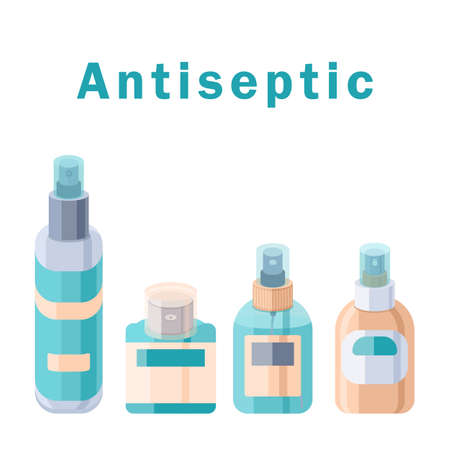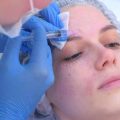1. Understanding Downtime: What to Expect After Non-Surgical Treatments
For many British patients considering non-surgical cosmetic procedures, understanding the concept of downtime is crucial for planning and peace of mind. Unlike traditional surgery, non-surgical treatments such as dermal fillers, Botox, chemical peels, and laser therapies generally involve minimal recovery time. However, it is important to recognise that some side effects are common and temporary.
Common Side Effects and Immediate Recovery
After most popular non-surgical procedures, patients may notice mild swelling, redness, or bruising at the treatment site. These reactions are typically short-lived—often subsiding within a few hours to a couple of days. For example, those receiving injectable treatments might experience slight tenderness or minor bruising, which can usually be concealed with makeup after 24 hours.
When Can You Return to Daily Activities?
One of the key benefits of non-surgical treatments is the ability to quickly resume normal activities. Most British patients can return to work or social engagements the same day or by the following morning, depending on the specific procedure and individual response. It is always advisable to avoid strenuous exercise, excessive heat (such as saunas), and alcohol for at least 24 hours post-treatment to minimise swelling and support optimal results.
Realistic Expectations for British Patients
The realistic downtime for non-surgical procedures in the UK is often much less than many anticipate. Still, it’s wise to schedule treatments with consideration for special events or commitments—allowing at least one to three days for any visible signs to settle. By being informed about what to expect, British patients can confidently plan their non-surgical treatments around their lifestyle with minimal disruption.
2. Essential Aftercare Tips for a Smooth Recovery
Proper aftercare is crucial to maximise results and minimise downtime following non-surgical treatments, such as dermal fillers, anti-wrinkle injections, or laser therapies. For British patients, tailoring your recovery routine to local products and lifestyle considerations can significantly enhance your comfort and outcomes.
Trusted Advice Tailored to UK Patients
After treatment, it is normal to experience mild redness, swelling, or tenderness at the treatment site. To address these common concerns, UK-based practitioners recommend a combination of good skincare habits and trusted pharmacy products readily available on the high street.
Recommended British Pharmacy Products
| Concern | Product Type | UK Pharmacy Example | Usage Advice |
|---|---|---|---|
| Redness & Swelling | Cooled soothing gel or cream | E45 Cream, Boots Soothing Aloe Gel | Apply gently on the treated area as directed, avoiding harsh rubbing. |
| Sensitivity & Dryness | Fragrance-free moisturiser | Cetaphil Moisturising Cream, Aveeno Daily Moisturising Lotion | Moisturise twice daily; opt for hypoallergenic options to reduce irritation. |
| Pain Relief | Mild painkillers (if needed) | Paracetamol (available at all major UK chemists) | Only use if advised by your practitioner; avoid ibuprofen for 24 hours post-injection. |
| Sun Protection | Broad-spectrum SPF 30+ | La Roche-Posay Anthelios, Garnier Ambre Solaire SPF 50+ | Apply generously every morning, even during overcast British days. |
Local Lifestyle Adjustments for Better Healing
- Avoid strenuous activity: Take it easy for at least 24 hours after your treatment—swap gym sessions for gentle walks in the park.
- No hot baths or saunas: Steer clear of heat exposure and steam rooms commonly found in British leisure centres for at least two days.
- Avoid alcohol: Skip celebratory drinks at the pub immediately after your procedure to help reduce swelling and bruising risk.
- Stay hydrated: The UKs climate can be dehydrating indoors—drink plenty of water and use a humidifier if central heating dries out your home.
- Follow practitioner advice: Always adhere to the bespoke aftercare instructions provided by your clinic, as protocols may vary based on your individual needs and the specific treatment received.
Your Comfort Matters: When to Seek Help?
If you notice unusual symptoms such as increasing pain, severe swelling, or signs of infection (such as pus or excessive redness), contact your aesthetic practitioner or NHS 111 promptly. Most minor side effects resolve within a few days, but it’s always best to err on the side of caution for peace of mind.

3. How Long Do Results Last? Longevity of Common Non-Surgical Treatments
Understanding how long you can expect your results to last is a crucial aspect for anyone considering non-surgical aesthetic treatments in the UK. The longevity of results varies based on the specific procedure, individual lifestyle factors, and the products used. Here, we break down the typical duration of some of the most popular treatments among British patients, including anti-wrinkle injections and dermal fillers.
Anti-Wrinkle Injections (Botulinum Toxin)
Anti-wrinkle injections, commonly referred to by brand names such as Botox®, are widely chosen across the UK for reducing dynamic facial lines. On average, British patients can expect results to last between three to four months. Factors such as metabolism, the area treated, and frequency of muscle movement may affect how quickly the effects wear off. Some individuals may notice a gradual return of muscle activity sooner, while others enjoy prolonged smoothness with consistent maintenance appointments.
Dermal Fillers
Dermal fillers—most often composed of hyaluronic acid—are favoured for restoring lost volume or enhancing features like lips and cheeks. The longevity of fillers typically ranges from six months up to 18 months, depending on the product used, treatment area, and patient-specific considerations. For instance, lip fillers tend to metabolise faster due to frequent movement, while cheek or jawline enhancements may last longer. British practitioners often use premium brands approved by the MHRA (Medicines and Healthcare products Regulatory Agency) to ensure safety and optimal duration.
Other Popular Non-Surgical Options
- Chemical Peels: Light peels offer rejuvenation for several weeks, while medium-depth options can provide visible improvements for a few months.
- Microneedling: Most patients see results lasting up to six months, especially when combined with recommended skincare routines.
- Laser Skin Treatments: Effects can last one year or more with proper aftercare and sun protection, which is particularly emphasised by UK dermatologists given variable British weather conditions.
What Can Influence Your Results?
The longevity of non-surgical treatments is not set in stone; it’s influenced by numerous factors including age, skin type, lifestyle choices (such as smoking or sun exposure), and adherence to aftercare advice. Patients in the UK who prioritise regular follow-up visits and healthy habits generally report more durable outcomes. Consulting with a qualified practitioner who understands both your aesthetic goals and unique characteristics ensures that your investment in appearance delivers lasting satisfaction.
Cultural Considerations: British Attitudes Towards Aesthetic Downtime
Understanding the cultural landscape is crucial when considering non-surgical aesthetic treatments in the UK. British patients often approach cosmetic recovery with a distinct set of attitudes shaped by workplace norms, social expectations, and general perceptions of personal appearance. Below, we examine how these cultural factors can influence your experience and decision-making regarding downtime and aftercare.
Workplace Culture and Discretion
The British workplace tends to value professionalism, punctuality, and discretion. Many employees are keen to avoid drawing attention to themselves, especially regarding personal or aesthetic choices. As a result, patients frequently seek treatments with minimal visible side effects or downtime, allowing them to return to work swiftly without inviting questions or speculation.
| Common Workplace Concerns | Patient Preferences |
|---|---|
| Visible bruising or swelling | Opt for subtle treatments or schedule procedures before weekends/holidays |
| Time off for recovery | Choose lunchtime procedures or stagger appointments |
| Maintaining privacy | Request discreet aftercare advice from practitioners |
Social Expectations and Stigma
While attitudes towards cosmetic enhancements are becoming more accepting in the UK, there remains a preference for natural results and understated changes. Overt signs of recent treatment—such as redness or peeling—may be viewed less favourably in certain social circles. This influences many Britons to select non-surgical options that promise gradual improvement rather than dramatic transformation.
Navigating Social Events Post-Treatment
Given the British calendar’s frequent social gatherings—from pub meet-ups to formal events—patients often plan treatments around their social diaries. Transparency with close friends may be increasing, but most still prefer minimal downtime to avoid awkward conversations about their appearance.
Cultural Tips for Smoother Recovery
- Plan ahead: Align your procedure with periods of lighter social and professional commitments.
- Embrace subtlety: Choose gradual treatments that blend seamlessly into your routine.
- Consult professionals: Ask your practitioner for tailored aftercare tips that suit your lifestyle and minimise visible recovery markers.
This nuanced approach reflects a broader British tendency towards modesty and pragmatism, ensuring that the journey towards self-enhancement fits comfortably within everyday life.
5. What to Ask Your Practitioner: Ensuring Your Peace of Mind
When considering a non-surgical treatment in the UK, being well-prepared for your consultation is essential. Asking the right questions not only clarifies expectations but also ensures your safety and satisfaction throughout your aesthetic journey. Here’s a practical checklist tailored for British patients, empowering you to make confident, informed decisions.
Key Questions About Downtime
How much time will I need to recover?
Understanding expected downtime helps you plan around work, social commitments, and daily life. Ask whether you’ll need to take time off or if there are activities you should avoid immediately after the procedure.
What are the typical side effects and how long do they last?
Inquire about common post-treatment symptoms such as redness, swelling, or bruising, and how soon you can expect them to subside. This knowledge enables you to anticipate and manage any temporary changes.
Essential Aftercare Queries
What specific aftercare steps should I follow?
Your practitioner should provide detailed guidance on skincare routines, products to avoid, and when it’s safe to resume normal activities like exercise or wearing makeup.
Whom do I contact if I have concerns post-treatment?
Ensure you have clear instructions on how to reach your practitioner or clinic in case of unexpected reactions or worries during your recovery period.
Longevity and Results: Setting Realistic Expectations
How long will the results last?
Treatments vary in durability. Ask about expected longevity and whether maintenance sessions are recommended for optimal results—especially important if you’re budgeting for future treatments.
What factors could affect my individual results?
Lifestyle habits, skin type, and other personal factors can influence outcomes. A reputable practitioner will discuss these openly, tailoring advice to your circumstances.
Final Thought: Empower Yourself Through Communication
The British approach values transparency, professionalism, and patient empowerment. By proactively raising these questions, you take charge of your experience—ensuring peace of mind from consultation through to results.
6. Resources and Support for Patients in the UK
When considering non-surgical treatments, British patients benefit greatly from knowing where to turn for trusted information, aftercare guidance, and emotional support. The UK offers a range of reputable organisations and helplines designed to assist those navigating their aesthetic journey.
Signposts to Reputable Organisations
If you’re seeking further advice or reassurance post-treatment, several well-established bodies can provide reliable information. The British Association of Dermatologists (BAD) offers comprehensive resources on skin health and non-surgical cosmetic procedures. The Joint Council for Cosmetic Practitioners (JCCP) maintains public registers of approved practitioners and sets safety standards for non-surgical treatments in the UK.
Helplines for Immediate Support
Should you have concerns about your recovery or experience unexpected side effects, the NHS 111 service is available 24/7 for medical advice. For emotional wellbeing related to body image or treatment outcomes, Mental Health UK and Samaritans offer confidential helplines to support patients experiencing anxiety or uncertainty post-procedure.
Further Reading and Patient Guidance
For those wishing to deepen their understanding, the NHS Cosmetic Procedures Guide provides evidence-based information tailored to British patients. Additionally, Save Face lists accredited clinics and practitioners, helping you make informed choices about your care providers.
By utilising these resources, patients across the UK can approach non-surgical treatments with greater confidence—equipped with trusted aftercare advice and access to professional emotional support when needed.


